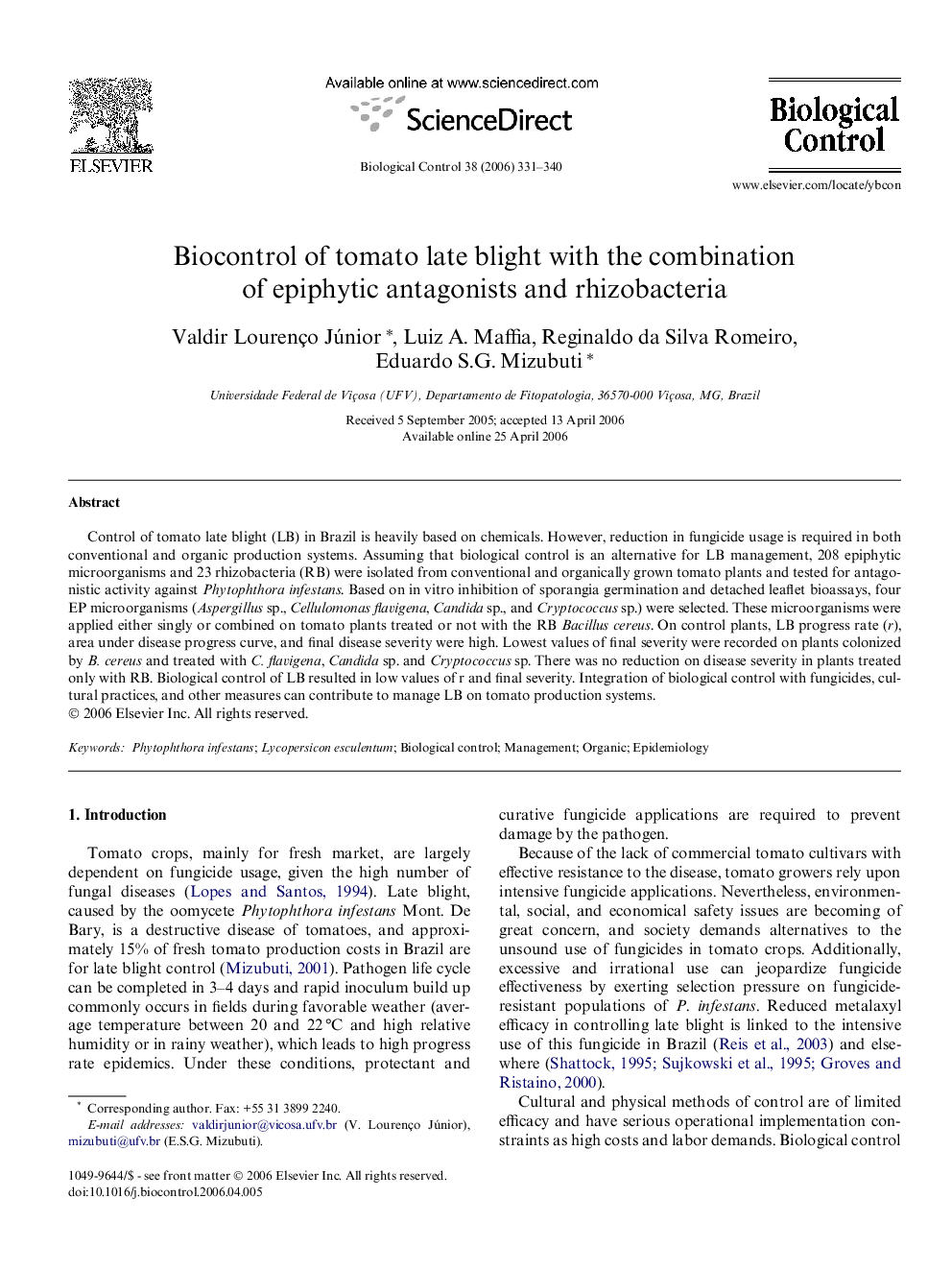| Article ID | Journal | Published Year | Pages | File Type |
|---|---|---|---|---|
| 4505277 | Biological Control | 2006 | 10 Pages |
Control of tomato late blight (LB) in Brazil is heavily based on chemicals. However, reduction in fungicide usage is required in both conventional and organic production systems. Assuming that biological control is an alternative for LB management, 208 epiphytic microorganisms and 23 rhizobacteria (RB) were isolated from conventional and organically grown tomato plants and tested for antagonistic activity against Phytophthora infestans. Based on in vitro inhibition of sporangia germination and detached leaflet bioassays, four EP microorganisms (Aspergillus sp., Cellulomonas flavigena, Candida sp., and Cryptococcus sp.) were selected. These microorganisms were applied either singly or combined on tomato plants treated or not with the RB Bacillus cereus. On control plants, LB progress rate (r), area under disease progress curve, and final disease severity were high. Lowest values of final severity were recorded on plants colonized by B. cereus and treated with C. flavigena, Candida sp. and Cryptococcus sp. There was no reduction on disease severity in plants treated only with RB. Biological control of LB resulted in low values of r and final severity. Integration of biological control with fungicides, cultural practices, and other measures can contribute to manage LB on tomato production systems.
